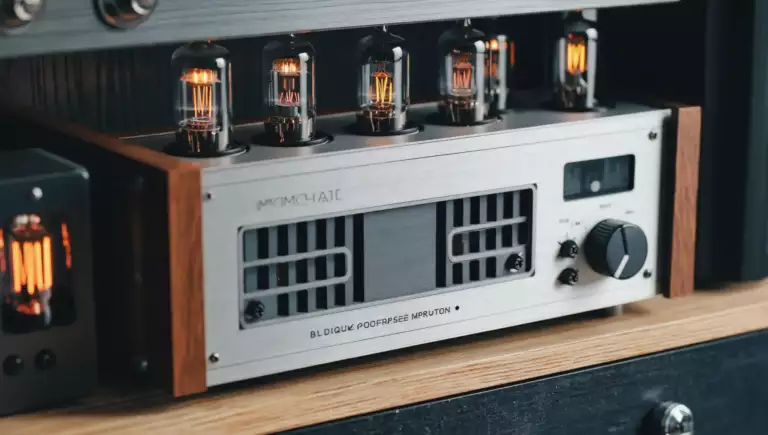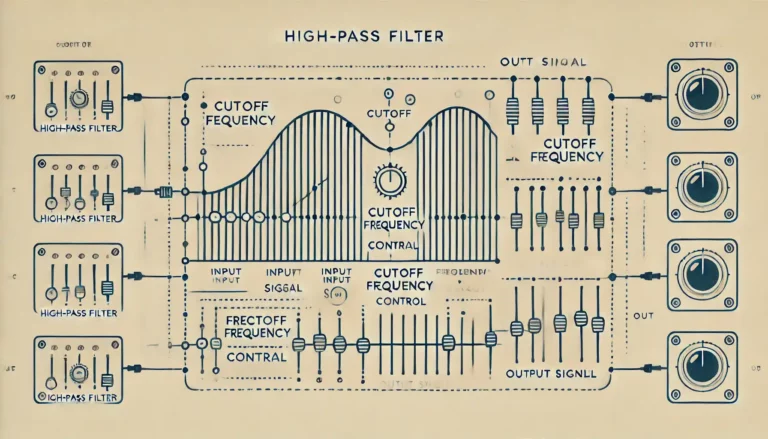Psytrance, or psychedelic trance, is a subgenre of electronic dance music known for its fast tempo, complex layered melodies, and immersive soundscapes. A key element in producing the signature sound of psytrance is the use of low pass filters. This article delves into the role of low pass filters in psytrance production, exploring their technical aspects, creative applications, and tips for effective usage.
Introduction to Low Pass Filters
A low pass filter (LPF) is an electronic filter that allows frequencies below a certain cutoff point to pass through while attenuating frequencies above that point. This type of filter is essential in various audio processing applications, including sound synthesis, mixing, and mastering.
Key Components of Low Pass Filters
- Cutoff Frequency: The frequency at which the filter starts to attenuate higher frequencies.
- Resonance (Q Factor): Boosts frequencies around the cutoff point, adding emphasis and character.
- Slope: Determines how sharply the frequencies are attenuated beyond the cutoff point. Common slopes are 12dB/octave, 24dB/octave, etc.
The Role of Low Pass Filters in Psytrance
In psytrance production, low pass filters are utilized to shape sounds, create dynamic movement, and manage frequency content. Here’s how they contribute to the genre’s distinct sound:
Sound Shaping and Synthesis
- Basslines: Psytrance basslines often rely on low pass filters to remove unwanted high frequencies, creating a clean and focused low-end. By adjusting the cutoff frequency and resonance, producers can craft bass sounds that sit well in the mix without clashing with other elements.
- Leads and Pads: Low pass filters are used on lead synths and pads to create evolving textures. By modulating the cutoff frequency over time, producers can introduce movement and progression, which are key elements in psytrance tracks.
Creating Dynamic Movement
- Filter Sweeps: A common technique in psytrance is the use of filter sweeps, where the cutoff frequency of a low pass filter is gradually increased or decreased. This creates a sense of build-up and release, enhancing the track’s dynamics.
- Automating Filters: Automation of low pass filters can bring static sounds to life. By linking the cutoff frequency to an LFO (Low-Frequency Oscillator) or an envelope, producers can add rhythmic modulation that syncs with the track’s tempo.
Frequency Management
- Mix Clarity: Low pass filters help in managing the frequency spectrum by removing high-frequency content from certain elements, thereby reducing clutter and ensuring each sound has its own space.
- Transition Effects: During transitions, such as breakdowns or drops, low pass filters can be used to create contrast and tension. For example, slowly lowering the cutoff frequency of the entire mix can create a muffled effect, which then resolves back to full spectrum for impact.
Techniques and Tips for Using Low Pass Filters
To effectively use low pass filters in psytrance production, consider the following techniques and tips:
Modulating Cutoff Frequency
- Envelope Followers: Use an envelope follower to control the cutoff frequency dynamically based on the amplitude of the input signal. This can create interesting interactions between the filter and the sound source.
- LFO Modulation: Apply an LFO to the cutoff frequency to introduce periodic modulation. Experiment with different waveforms (sine, square, triangle) and rates to achieve the desired rhythmic effect.
Enhancing Basslines
- Subtractive Synthesis: Start with a harmonically rich waveform, such as a sawtooth, and use a low pass filter to sculpt the bass sound. Adjust the cutoff and resonance to taste, ensuring the bass remains tight and punchy.
- Layering: Combine multiple layers of bass sounds, each processed with its own low pass filter settings. This can add depth and complexity to the bassline, making it more interesting.
Crafting Leads and Pads
- Filter Envelopes: Use filter envelopes to shape the attack, decay, sustain, and release of the sound. This is particularly effective for leads, where a snappy filter envelope can add definition and energy.
- Resonance Tweaking: Adjust the resonance to highlight specific harmonics and add a unique character to the sound. Be cautious with high resonance settings, as they can introduce harshness.
Building Transitions
- Filter Automation: Automate the cutoff frequency during transitions to create anticipation and excitement. For example, gradually lowering the cutoff frequency during a breakdown can create a sense of anticipation, which is then released when the filter opens up again.
- Combination with Effects: Combine low pass filters with other effects, such as reverb and delay, to enhance transitions. Filtering the reverb tail, for instance, can create a sense of depth and space.
Practical Applications in Psytrance Tracks
To illustrate the practical applications of low pass filters in psytrance, let’s break down a hypothetical track:
Intro and Build-Up
- Ambient Pads: Start with atmospheric pads filtered through a low pass filter with a low cutoff frequency, creating a warm, subdued texture. Gradually increase the cutoff frequency to introduce more harmonics as the track progresses.
- Percussive Elements: Add percussive elements with their high frequencies attenuated, allowing the focus to be on the rhythmic patterns without overwhelming the mix.
Main Section
- Bassline: Use a low pass filter to sculpt the bassline, ensuring it remains prominent and clean. Modulate the cutoff frequency subtly to add movement and prevent it from becoming static.
- Leads: Introduce lead synths with dynamic filter modulation. Automate the cutoff frequency to create evolving melodies and maintain listener interest.
Breakdown
- Filter Sweeps: Employ filter sweeps on various elements to create a sense of breakdown and anticipation. Gradually lower the cutoff frequency on the master bus for a cohesive effect.
- Reverb and Delay: Apply low pass filters to reverb and delay tails, creating a smooth transition into the breakdown without excessive high-frequency content.
Drop
- Full Spectrum Impact: When the drop hits, open up the low pass filters to unleash the full frequency spectrum. This contrast creates a powerful impact and enhances the listener’s experience.
- Bass and Leads Interaction: Use low pass filters to ensure the bass and leads interact harmoniously. For instance, slightly attenuate the high frequencies of the bass to make room for the lead synths.
Conclusion
Low pass filters are indispensable tools in psytrance production, offering a range of creative and practical applications. From shaping sounds and creating dynamic movement to managing frequencies and building transitions, low pass filters play a crucial role in defining the genre’s distinctive sound. By mastering the techniques and tips outlined in this article, producers can harness the full potential of low pass filters to elevate their psytrance tracks to new heights.
Incorporating low pass filters effectively requires both technical understanding and creative experimentation. As with any production tool, the key is to use them purposefully and musically, ensuring they enhance the overall composition rather than detract from it. Whether you’re a seasoned psytrance producer or just starting out, embracing the power of low pass filters can open up a world of sonic possibilities and help you craft captivating and immersive tracks.


